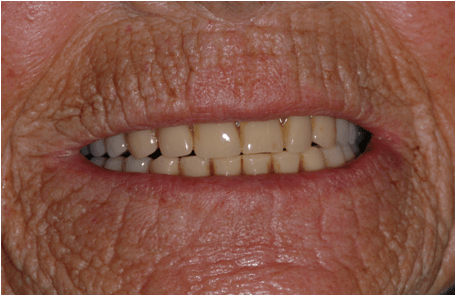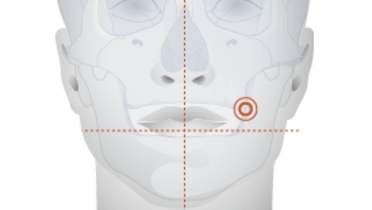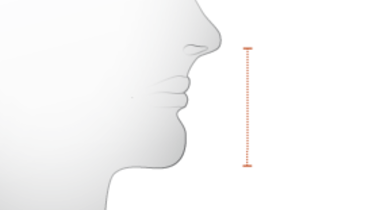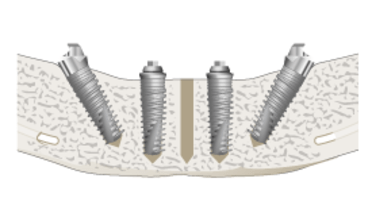-
0
Patient Assessment
- 0.1 Patient demand
- 0.2 Overarching considerations
- 0.3 Local history
- 0.4 Anatomical location
- 0.5 General patient history
-
0.6
Risk assessment & special high risk categories
- 5.1 Risk assessment & special high risk categories
- 5.2 age
- 5.3 Compliance
- 5.4 Smoking
- 5.5 Drug abuse
- 5.6 Recreational drugs and alcohol abuse
- 5.7 Parafunctions
- 5.8 Diabetes
- 5.9 Osteoporosis
- 5.10 Coagulation disorders and anticoagulant therapy
- 5.11 Steroids
- 5.12 Bisphosphonates
- 5.13 BRONJ / ARONJ
- 5.14 Radiotherapy
- 5.15 Risk factors
-
1
Diagnostics
-
1.1
Clinical Assessment
- 0.1 Lip line
- 0.2 Mouth opening
- 0.3 Vertical dimension
- 0.4 Maxillo-mandibular relationship
- 0.5 TMD
- 0.6 Existing prosthesis
- 0.7 Muco-gingival junction
- 0.8 Hyposalivation and Xerostomia
- 1.2 Clinical findings
-
1.3
Clinical diagnostic assessments
- 2.1 Microbiology
- 2.2 Salivary output
-
1.4
Diagnostic imaging
- 3.1 Imaging overview
- 3.2 Intraoral radiographs
- 3.3 Panoramic
- 3.4 CBCT
- 3.5 CT
- 1.5 Diagnostic prosthodontic guides
-
1.1
Clinical Assessment
-
2
Treatment Options
- 2.1 Mucosally-supported
-
2.2
Implant-retained/supported, general
- 1.1 Prosthodontic options overview
- 1.2 Number of implants maxilla and mandible
- 1.3 Time to function
- 1.4 Submerged or non-submerged
- 1.5 Soft tissue management
- 1.6 Hard tissue management, mandible
- 1.7 Hard tissue management, maxilla
- 1.8 Need for grafting
- 1.9 Healed vs fresh extraction socket
- 1.10 Digital treatment planning protocols
- 2.3 Implant prosthetics - removable
-
2.4
Implant prosthetics - fixed
- 2.5 Comprehensive treatment concepts
-
3
Treatment Procedures
-
3.1
Surgical
-
3.2
Removable prosthetics
-
3.3
Fixed prosthetics
-
3.1
Surgical
- 4 Aftercare
Mouth opening
Key points
- Patients may present with small mouths, or limited mouth opening due to trauma, surgical interventions, sclerodermia, scars or muscular and Temporo-mandibular disorder (TMD)
- Handle circum-oral soft tissues gently and use smaller sized-instruments, such as the ones designed for pediatric patients
- Implant therapy offers the opportunity to manage a limited mouth opening with a more convenient prosthesis access design
Mouth opening & access for treatment interventions
Most patients’ mouth opening readily permits access for routine prosthodontic and surgical treatment interventions. Limited mouth opening or microstomia is encountered in patients exposed to sclerodermia, diffuse systemic sclerosis, oro-facial trauma or surgical resections for neoplastic disease, temporo-mandibular disorder (TMD). The latter’s resultant scarring and tissue contracture, together with an accompanying lack of underlying bony support and tissue edema, restricts the mouth opening and renders surgical and dental treatment difficult.
One cannot provide a lower limit for a mouth opening which would prevent from choosing an implant-based rehabilitation. The labial orientation of the implant axis, subsequently compensated by angulated abutments or superstructures, can provide a solution to the access difficulties.
Soft tissue healing and/or scarring can take years to reach a stable status. Meanwhile efforts to achieve a provisional and also definitive tissue support and improve esthetics with a prosthesis must be considered prior to further treatment planning.

Surgical resections or trauma to the oral cavity structures can also lead to loss in vertical dimension, reduced opening of the mandible plus altered mandibular motion. Associated trismus leading to fibrosis and scarring is often the main cause. Radiotherapy can also cause perioral tissue fibrosis. As the treated areas heal, manual mouth opening exercises and stretching may improve the range of mandibular motion and vertical opening. A decreased vertical opening presents with significant challenges for the oral hygiene maintenance, food bolus manipulation and surgical and prosthetic management.
Patients with limited mouth openings are usually readily managed via gentle and scrupulous handling of circum-oral soft tissues and use of smaller sized-instruments as designed for pediatric patients. Dentures with a flexible denture base material can be discussed if this treatment is the best option.
Implant therapy offers possibilities for matching a limited mouth opening with a more convenient and controlled prosthesis access design. Via customized treatment designs retention and stability can be guaranteed. This is also the time to check whether intubation can be safely performed if general anesthesia is planned for the implant-based therapy.

Clinical topics
Related articles
Additional external resources
Questions
Ask a questionAfter my head and neck surgery mouth is opening 1 cm. Jaw stretcher exercise doing but not fruitfull kindly advise medication
After my Head & Neck surgery and radiation my mouth is opening just 1 cm . I am doing a jaw stretcher exercise from last 3 months . At the time of exercise it opens to 2 to 3cm but after 10 mnts it comes back to his original position. Kindly help me ...i am unable to eat ..and my weight decreasing
After my Head & Neck surgery and radiation my mouth is opening just 1 cm . I am doing a jaw stretcher exercise from last 3 months . At the time of exercise it opens to 2 to 3cm but after 10 mnts it comes back to his original position. Kindly help me ...i am unable to eat ..and my weight decreasing




Hi, my mouth opening size is decreasing slowly day after day. Could you please tell me any medication for that